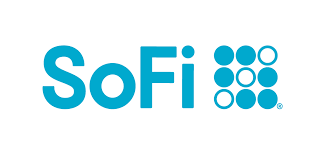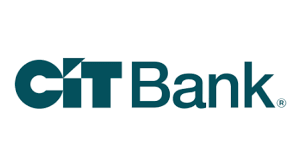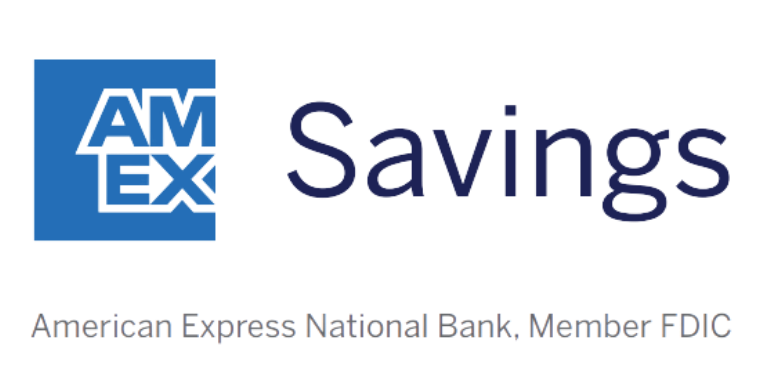If one bank account does precisely what you need it to do, that's great. But what if more accounts made your life easier and helped you feel more in control of your personal finances?
Here, we cover how many bank accounts you should have, why more than one account can be helpful, and when having multiple bank accounts is a bad idea.
How many bank accounts should I have?
The number of bank accounts you should have is not a one-size-fits-all question. After all, the purpose of opening more than one bank account is to make your life easier and more organized.
How many accounts you should have depends on your goals and how confident you are that you can juggle more than one account.
Used strategically, multiple bank accounts can help you reach a specific financial goal. And who knows? Switching to a different bank to open an account may give you access to perks your current bank does not offer.
Compare savings rates
Make sure you're getting the best account for you by comparing savings rates and promotions. Here are some of our favorite high-yield savings accounts to consider.
| Account | APY | Promotion | Next Steps |
|---|---|---|---|

Open Account for SoFi Checking and Savings
On SoFi's Secure Website.
Rating image, 4.50 out of 5 stars.
4.50/5
Our ratings are based on a 5 star scale.
5 stars equals Best.
4 stars equals Excellent.
3 stars equals Good.
2 stars equals Fair.
1 star equals Poor.
We want your money to work harder for you. Which is why our ratings are biased toward offers that deliver versatility while cutting out-of-pocket costs.
|
up to 3.80%²
Rate info
You can earn the maximum APY by having Direct Deposit (no minimum amount required) or by making $5,000 or more in Qualifying Deposits every 30 days. See SoFi Checking and Savings rate sheet at: https://www.sofi.com/legal/banking-rate-sheet.
Min. to earn: $0
|
New customers can earn up to a $300 bonus with qualifying direct deposits!¹
|
Open Account for SoFi Checking and Savings
On SoFi's Secure Website. |

Open Account for CIT Platinum Savings
On CIT's Secure Website.
Rating image, 4.50 out of 5 stars.
4.50/5
Our ratings are based on a 5 star scale.
5 stars equals Best.
4 stars equals Excellent.
3 stars equals Good.
2 stars equals Fair.
1 star equals Poor.
We want your money to work harder for you. Which is why our ratings are biased toward offers that deliver versatility while cutting out-of-pocket costs.
|
4.10% APY for balances of $5,000 or more
Rate info
4.10% APY for balances of $5,000 or more; otherwise, 0.25% APY
Min. to earn: $100 to open account, $5,000+ for max APY
|
Earn a bonus of at least $225 after a one-time deposit of $25,000+.
Transfer a one-time deposit of $25,000-$49,999.99 for a bonus of $225. Transfer a one-time deposit of $50,000+ for a bonus of $300. Account must be opened with code PS2025 while this promotion lasts, and funded within 30 days. Bonus will be fulfilled within 60 days from the funding date. There is no period of time where the customer will be required to maintain the funds. Account must be open when bonus is credited. One bonus per account and primary customer. Bonus will be credited into the Platinum Savings Account that fulfills the funding requirement. Funding can be deposited all at once or incrementally.
|
Open Account for CIT Platinum Savings
On CIT's Secure Website. |

Open Account for American Express® High Yield Savings
On American Express's Secure Website.
Rating image, 4.00 out of 5 stars.
4.00/5
Our ratings are based on a 5 star scale.
5 stars equals Best.
4 stars equals Excellent.
3 stars equals Good.
2 stars equals Fair.
1 star equals Poor.
We want your money to work harder for you. Which is why our ratings are biased toward offers that deliver versatility while cutting out-of-pocket costs.
|
3.70%
Rate info
3.70% annual percentage yield as of April 15, 2025. Terms apply.
Min. to earn: $0
|
N/A
|
Open Account for American Express® High Yield Savings
On American Express's Secure Website. |
SoFi disclosure:
¹ New and existing Checking and Savings members who have not previously enrolled in Direct Deposit with SoFi are eligible to earn a cash bonus of either $50 (with at least $1,000 total Direct Deposits received during the Direct Deposit Bonus Period) OR $300 (with at least $5,000 total Direct Deposits received during the Direct Deposit Bonus Period). Cash bonus will be based on the total amount of Direct Deposit. Direct Deposit Promotion begins on 12/7/2023 and will be available through 1/31/26. See full bonus and annual percentage yield (APY) terms at sofi.com/banking#1.
² SoFi members who enroll in SoFi Plus with Direct Deposit or by paying the SoFi Plus Subscription Fee every 30 days or with $5,000 or more in Qualifying Deposits during the 30-Day Evaluation Period can earn 3.80% annual percentage yield (APY) on savings balances (including Vaults) and 0.50% APY on checking balances. There is no minimum Direct Deposit amount required to qualify for the stated interest rate. Members without either SoFi Plus or Qualifying Deposits, during the 30-Day Evaluation Period will earn 1.00% APY on savings balances (including Vaults) and 0.50% APY on checking balances. Only SoFi Plus members are eligible for other SoFi Plus benefits. Interest rates are variable and subject to change at any time. These rates are current as of 1/24/25. There is no minimum balance requirement. Additional information can be found at http://www.sofi.com/legal/banking-rate-sheet. See the SoFi Plus Terms and Conditions at https://www.sofi.com/terms-of-use/#plus.
³ We do not charge any account, service or maintenance fees for SoFi Checking and Savings. We do charge a transaction fee to process each outgoing wire transfer. SoFi does not charge a fee for incoming wire transfers, however the sending bank may charge a fee. Our fee policy is subject to change at any time. See the SoFi Checking & Savings Fee Sheet for details at sofi.com/legal/banking-fees/.
⁴ SoFi Bank is a member FDIC and does not provide more than $250,000 of FDIC insurance per depositor per legal category of account ownership, as described in the FDIC’s regulations.
Any additional FDIC insurance is provided by the SoFi Insured Deposit Program. Deposits may be insured up to $3M through participation in the program. See full terms at SoFi.com/banking/fdic/sidpterms. See list of participating banks at SoFi.com/banking/fdic/participatingbanks.
⁵ We’ve partnered with Allpoint to provide you with ATM access at any of the 55,000+ ATMs within the Allpoint network. You will not be charged a fee when using an in-network ATM, however, third-party fees incurred when using out-of-network ATMs are not subject to reimbursement. SoFi’s ATM policies are subject to change at our discretion at any time.
⁶ Early access to direct deposit funds is based on the timing in which we receive notice of impending payment from the Federal Reserve, which is typically up to two days before the scheduled payment date, but may vary.
⁷ Overdraft Coverage is limited to $50 on debit card purchases only and is an account benefit available to customers with direct deposits of $1,000 or more during the current 30-day Evaluation Period as determined by SoFi Bank, N.A. The 30-Day Evaluation Period refers to the “Start Date” and “End Date” set forth on the APY Details page of your account, which comprises a period of 30 calendar days (the“30-Day Evaluation Period”). You can access the APY Details page at any time by logging into your SoFi account on the SoFi mobile app or SoFi website and selecting either (i) Banking > Savings > Current APY or (ii) Banking > Checking > Current APY. Members with a prior history of non-repayment of negative balances are ineligible for Overdraft Coverage.
When multiple bank accounts make sense
Here are some reasons for opening more than one bank account.
A bank or credit union offers perks you like
Let's say a local credit union has the best credit card offer you've found. You're not a member of that credit union, but if you join, you'll be eligible to apply for the card.
Or maybe a financial institution other than your current bank provides a debit card with great perks, like discounts and bonuses.
Another account fits your goals
Different goals call for different types of bank accounts. For example, you may want to open a checking account near your house so it's easy to swing by the ATM when needed or check your safe deposit box on occasion.
If withdrawing money from your savings account is often a temptation, you could decide to open a savings account a little farther away from home or online, where it wouldn't be quite as convenient to hit the ATM.
Having a separate account for emergency savings may also be a smart move, especially if you want to avoid dipping into your regular savings account. You can set aside a portion of your income each month in this account, which will come in handy during unexpected expenses or job loss.
The point is this: It's OK to open accounts that fit your needs, personality, and financial style.
You want to take advantage of higher interest rates
Some people open a money market account or certificate of deposit (CD) because the financial institution is paying a higher APY than other banks.
What's more, some people are simply good at chasing rates. That means they'll join a credit union or open an account at a new bank as long as they earn a higher interest rate on the banking products they routinely invest in. They'll look at everything, from CD rates to the interest paid on savings accounts. They open multiple accounts so their money will work for them.
You have a business or side job
It's common for business owners, gig workers, and freelancers to have more than one account. Their personal checking account is used to pay living expenses, while their business checking account covers business expenses. Most self-employed folks find that keeping a separate bank account allows them to track income and expenditures, making it easier to file taxes.
Some business owners use the profit-first method, where they divide their revenue into different accounts. This involves opening multiple business bank accounts strategically, with reserved funds in one for profit, another for operating expenses, and still others for taxes and other financial obligations.
By separating funds into various accounts for profit, taxes, and operating expenses, the profit-first method ensures that profits are not mistakenly consumed by expenses.
You have more than $250,000
The Federal Deposit Insurance Corporation (FDIC) insures up to $250,000 per depositor, per insured bank. If you have a significant sum of money in your bank account, this limit may not be enough to provide adequate protection. One option to protect your money is to open accounts at multiple FDIC-insured banks.
Opening accounts at multiple banks spreads out your money to minimize the chance of loss. It may seem like a hassle, but taking these steps to insure your money can provide peace of mind and financial stability in the long run.
RELATED: What to Do If Your Bank Closes Your Account
Pros and cons of having multiple bank accounts
Benefits:
- Enhanced organization: Separate accounts for different financial goals (e.g., savings, bills, investments) can help manage money more effectively.
- Increased FDIC coverage: Spreading money across multiple accounts can extend FDIC insurance coverage beyond the $250,000 limit per bank.
- Better budgeting: Allocating funds to specific accounts can aid in tracking expenses and sticking to budgets.
- Higher interest rates: Access to multiple banks can help find the best interest rates and maximize earnings on savings.
- Specialized services: Different banks may offer unique services or features tailored to various financial needs.
Drawbacks:
- Complex management: Keeping track of multiple accounts can be time-consuming and confusing.
- Fees and minimum balances: Some accounts may have fees or minimum balance requirements, increasing the risk of incurring charges.
- Delayed transfers: Moving money between accounts at different banks can take time, potentially causing delays in accessing funds.
- Potential overdrafts: Managing multiple accounts increases the chance of overdrafts if balances are not monitored closely.
- Reduced benefits: Spreading funds across accounts may prevent reaching higher balance tiers that offer better rates or rewards.
Should my partner and I have multiple bank accounts?
If you're in a long-term relationship, you may share a joint bank account, and that makes sense for some.
For example, if you typically pay half the household bills, you may want an account that allows you to sign up for direct deposit so your paycheck is available when it's time to pay bills. Perhaps your partner would rather run by the bank on payday, deposit some of their paycheck, and keep the rest out for discretionary spending.
Or maybe one of you is a big believer in putting money away for a rainy day while the other tends to spend more. Separate savings accounts can address that issue.
Just as a joint account does not mean that a relationship is stronger, a solo account does not mean a relationship is falling apart.
Can I have multiple accounts at one bank?
There are plenty of people who open several accounts at a single financial institution.
Let's say you put $1,000 a month into your savings account but have different amounts earmarked for different purposes. You may want:
- $400 to go into an emergency fund
- $200 toward paying down debt
- $200 to save for a new car
- $200 toward a vacation.
Rather than mix the money -- and potentially spend it -- it's OK to open four savings accounts, each with a different purpose.
As long as you can juggle four accounts, check them at least once a month, and stay atop all correspondence from the financial institution, multiple accounts can help you keep track of how close you're getting to the finish line.
Is it ok to only have one account?
While having multiple accounts can have its perks, it can also lead to confusion and complicate your financial life. If you find it hard to keep track of all the accounts and their balances, it’s best to stick to one or two accounts.
Consolidating your finances may make it easier to manage your money and reduce the risk of overdraft fees and late payment charges.
Bottom line
Deciding how many bank accounts to have boils down to personal preference and finances. If you have a business, emergency fund, and specific saving goals, multiple accounts can help you stay organized and on track.
On the other hand, if you are comfortable managing your money from one account and don’t want to deal with the hassle of multiple accounts, sticking to one or two accounts is a viable option.
Whatever you decide, make sure to research all the available options and choose the best one for your financial situation.
FAQs
-
No, having multiple bank accounts should not affect your credit score. The only exception would be if you allowed any of your bank accounts to fall into a negative balance without addressing the issue by making a deposit.
-
Typically, you know you have too many bank accounts when you're struggling to keep them straight and don't have the time to properly monitor each account.
-
Having multiple bank accounts can be great for budgeting. As long as each account has a specified purpose, multiple accounts can help you meet your budgeting goals.
We're firm believers in the Golden Rule, which is why editorial opinions are ours alone and have not been previously reviewed, approved, or endorsed by included advertisers. Motley Fool Money does not cover all offers on the market. Motley Fool Money is 100% owned and operated by The Motley Fool. Our knowledgeable team of personal finance editors and analysts are employed by The Motley Fool and held to the same set of publishing standards and editorial integrity while maintaining professional separation from the analysts and editors on other Motley Fool brands. Terms may apply to offers listed on this page. APYs are subject to change at any time without notice.